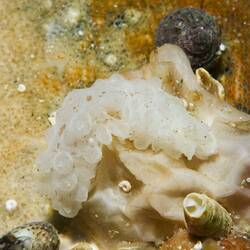Summary
The surface of the wooden smoking pipes used by clan leaders in eastern Arnhem Land are the smallest 'canvas' for madayin or sacred clan paintings. These pipes were used for smoking tobacco and are known by the Yolngu terms lunginy and pamatuka. They are distinctive to this region and are thought to have been an influence from Macassans, who came came on the annual trade winds over some 300 years from Suluwesi to Australia's northern waters to collect trepang, a sea cucumber. These pipes are only used by senior Yolngu men, and the minytji or designs and patterning related directly to those of the owner's clan. These men sported goatee beards to designate their authority and standing, a custom also thought to derive from the Macassan with the captains of the fishing fleets similarly having such a beard. While Macassans brought tobacco along with many other goods, it was a common trade commodity used by Europeans in the region in exchange for important objects.
Local Name
lunginy or pamatuka
Physical Description
A hollow cylindrical pipe painted with natural pigments. A metal cap is set into the blocked distal end and most likely is a bullet casing. It is coated in yellow ochre and painted with linear sections infilled with dots and crosshatching at the ends.
More Information
-
Object/Medium
Smoking pipe
-
Maker
-
Locality
Milingimbi, Eastern Arnhem Land, Northern Territory, Australia
-
Fully Extended
480 mm (Length), 20 mm (Width), 35 mm (Height)
-
Keywords
-
Type of item
-
Discipline
-
Category
-
Collecting Areas
Australian Indigenous - Northern Australia and Queensland and Torres Strait Islands

